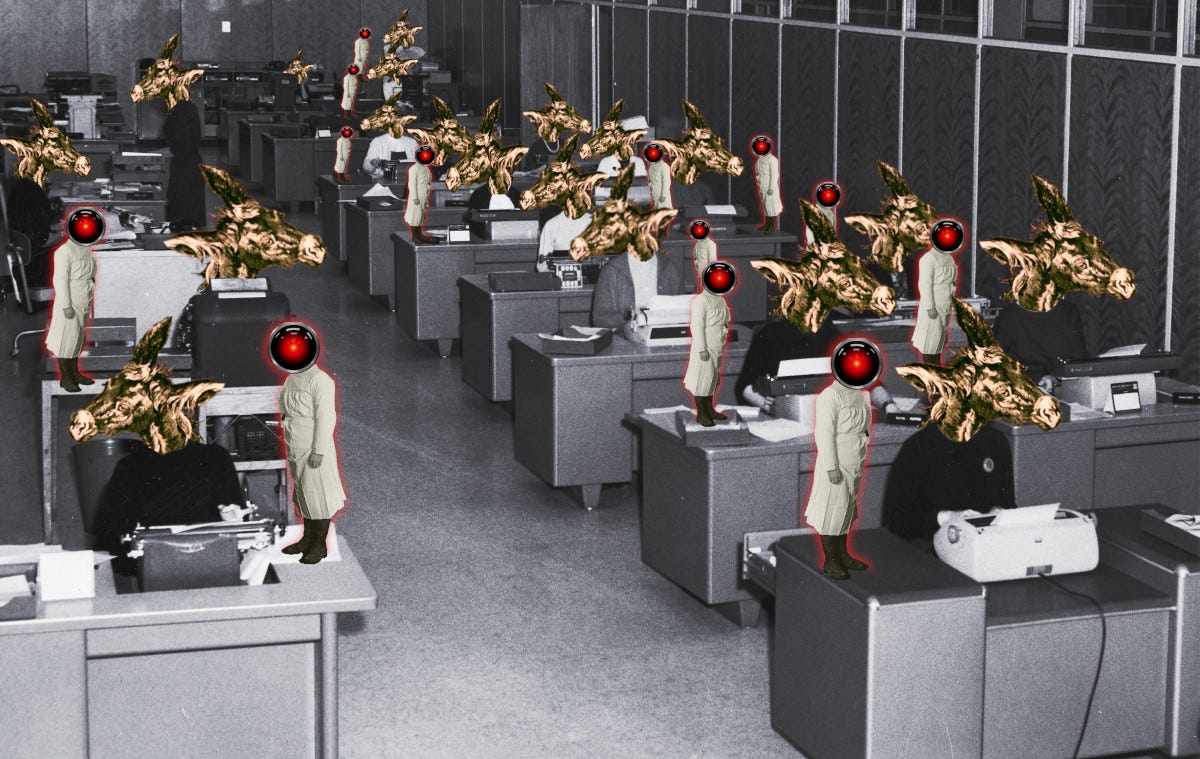The reverse-centaur apocalypse is upon us

🌈 Abstract
The article discusses the relationship between technology and labor, focusing on the concepts of "centaurs" and "reverse-centaurs". It examines how workplace monitoring and control technologies, such as "bossware", are transforming the nature of work and the power dynamics between employers and employees.
🙋 Q&A
[01] Centaurs vs. Reverse-Centaurs
1. What is the difference between a "centaur" and a "reverse-centaur" in the context of the article?
- A "centaur" is someone whose work is supercharged by automation, where they are a human head atop a tireless machine that allows them to be more productive.
- A "reverse-centaur" is someone who is harnessed to the machine, reduced to a mere peripheral for a relentless robotic overlord that directs them to work at a robotic pace, until their body and mind are exhausted.
2. How do bosses benefit from being "centaurs" through the use of bossware technology?
- Bossware allows bosses to monitor employees in unprecedented detail, down to their keystrokes, eye movements, and ambient sounds. This transforms the boss into a "centaur" with superhuman abilities to monitor and control their workforce.
3. How do workers become "reverse-centaurs" under the control of bossware technology?
- Bossware systems like Microsoft Dynamics 365 allow bosses to exert fine-grained control over workers, tracking their location, tasks, and time spent on each subtask. This turns workers into "reverse-centaurs" driven by "digital whips" to work at an unsustainable pace.
[02] Microsoft Dynamics 365 and Worker Exploitation
1. How does Microsoft Dynamics 365 enable the exploitation of workers?
- Dynamics 365 allows bosses to track worker location every 60-300 seconds, break down tasks into subtasks with expected completion times, and monitor worker performance in real-time. This creates an impossible bind for workers, as doing the job well takes more time than the system allows.
- The "AI" features in Dynamics 365 also automate the process of worker surveillance and performance evaluation, making it easier for bosses to exert control.
2. How do the reports from the "Data at Work" project characterize the impact of Dynamics 365 on workers?
- The reports describe the use of Dynamics 365 as creating a "chilling and heartbreaking" experience for workers, who become subjected to "digital whips" and an unsustainable pace of work.
3. How does the article situate the exploitation enabled by Dynamics 365 within a broader trend of technology-enabled worker control and surveillance?
- The article notes that Dynamics 365 is not unique, and that similar forms of worker exploitation and surveillance are being deployed across various industries, from retail and hospitality to call centers. It describes this as a broader "shitty technology adoption curve" where terrible practices first used on the most marginalized groups eventually spread to the wider workforce.